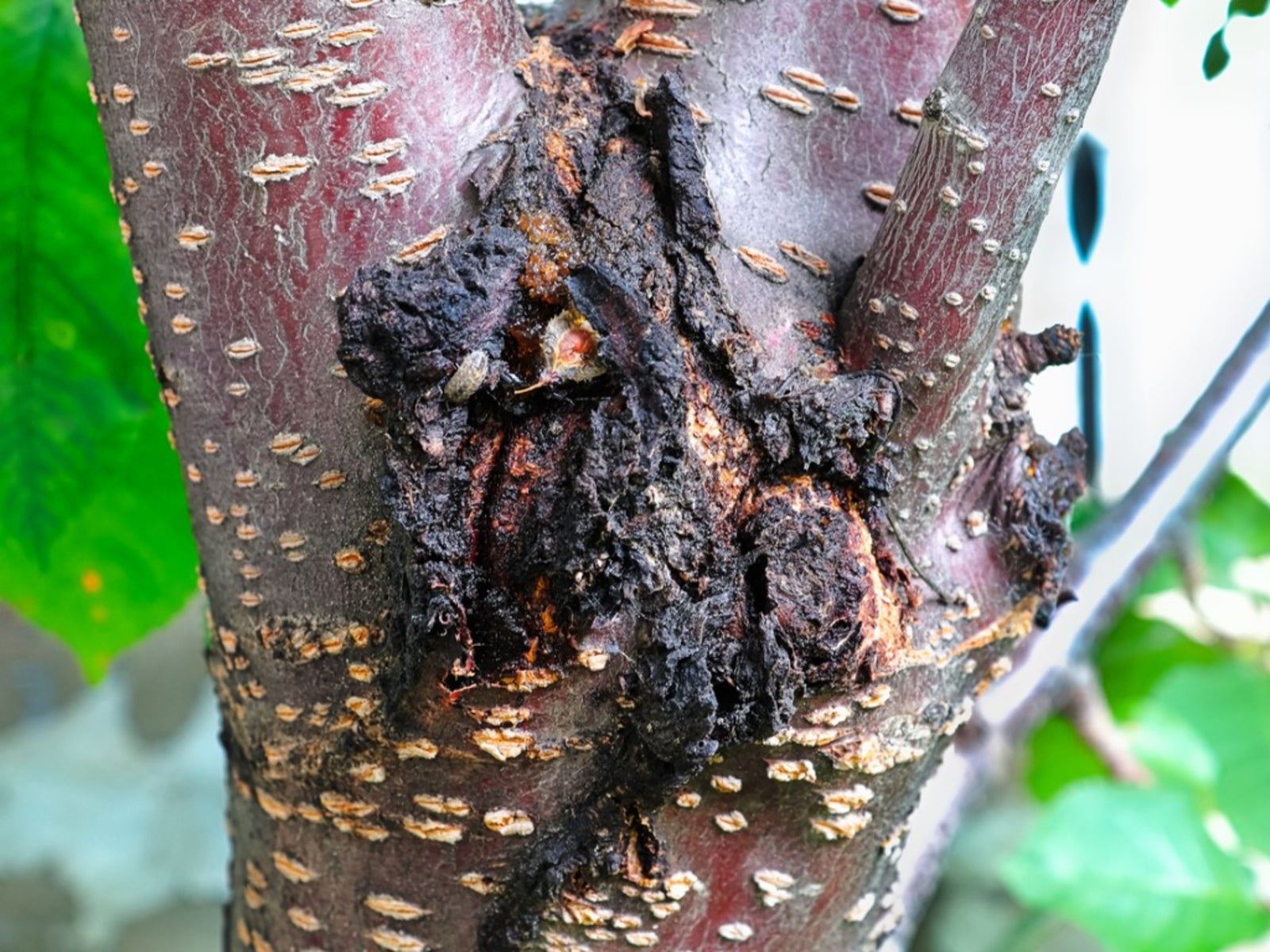What Is Bacterial Canker: Bacterial Canker Symptoms And Treatment


Trees make beautiful anchor points on lawns and in gardens, they often live very long lives and once established, they don't require any attention at all. Or do they? If you notice your tree suddenly developing sunken wounds that appear to be weeping a rusty or amber-colored liquid, it may be experiencing bacterial canker symptoms.
What is Bacterial Canker?
Bacterial canker on trees is caused by the bacteria Pseudomonas syringae, a relatively weak pathogen that regularly coexists with host trees without anyone noticing. When this infection does become symptomatic, usually on stone fruit trees, the bark on affected limbs turns brown and those limbs or trees may refuse to bloom or leaf out in the spring. Sometimes, trees will leaf out despite a raging case of bacterial canker, but these new leaves quickly wilt and die.
Bacterial Canker Control
Treatment of bacterial canker is generally mechanical, with the infected branches being removed using sterile pruning tools. Wait until late winter, if at all possible, and cauterize the wound with a hand-held propane torch to prevent reinfection by bacterial canker. It may be easier to see where the cankers end if you peel the bark back on infected branches until you find clean, white flesh. Cut at least 6 inches (15 cm.) beyond the wound nearest the tree, in case the infection is spreading inward. Disposing of infected tissues immediately can also help stop the spread of this disease. Once bacterial canker is removed from your trees, prevention is paramount. Often, trees become seriously infected when they're under stress or lack the proper nutrients. Trees planted in hard soils or where they cannot root deeply are most at risk. Check the pH of the soil around your tree and gently amend the top 16 inches (40 cm.) with lime if needed. Foliar sprays of micro-nutrients, including zinc and boron seem to be protective, especially if applied in the fall or spring. Nematodes can increase tree stress levels - if you have to replant, carefully fumigate your chosen site and select species grafted onto the most nematode resistant rootstocks you can find -- huardian rootstocks are known to be protective against these tiny roundworms.
Sign up for the Gardening Know How newsletter today and receive a free copy of our e-book "How to Grow Delicious Tomatoes".

Kristi Waterworth was a regular contributor to Gardening Know How for many years, answering countless queries on plant pests and diseases.